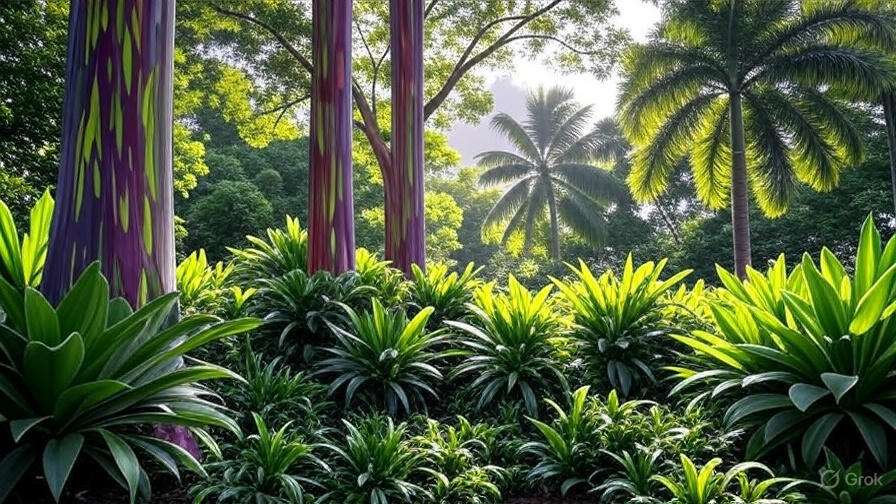
How to Grow and Care for Hawaii Eucalyptus Trees: A Complete Guide for Beginners
If you’re dreaming of adding the unique beauty of Hawaii eucalyptus trees to your garden or landscape, you’re in the right place! 
But don’t worry! In this guide, we’ll break down everything you need to know about nurturing your Hawaii eucalyptus trees. Whether you’re a first-time gardener or someone looking to expand your tree-growing knowledge, this article will provide you with step-by-step instructions, helpful tips, and expert advice to make your eucalyptus-growing journey a success. Ready to transform your backyard into an oasis of fragrant, vibrant trees? Let’s dive in!
Table of Contents
ToggleUnderstanding Hawaii Eucalyptus Trees 
Hawaii’s eucalyptus trees are unique, not just for their beauty, but also for their ability to thrive in the island’s tropical climate. Known for their fast growth, fragrant leaves, and striking bark, these trees are a favorite for gardeners and landscapers. But what makes them so special? Let’s take a closer look at these tropical gems and how to care for them.
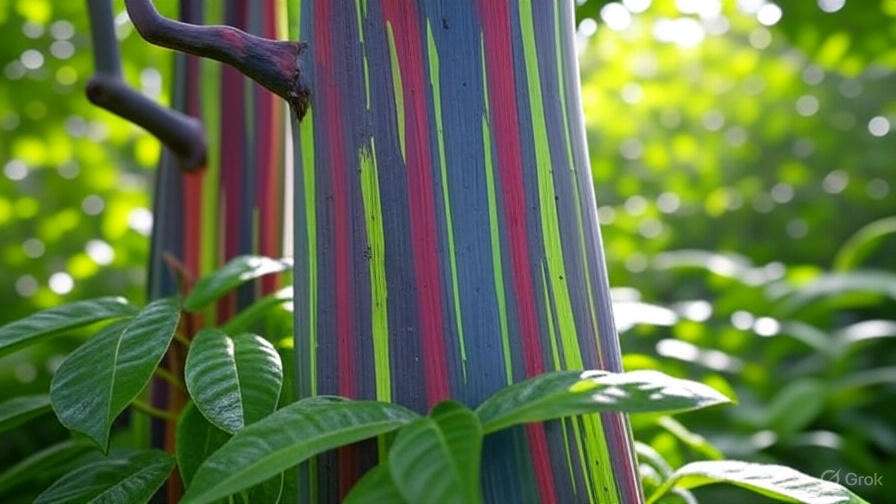
What Are Hawaii Eucalyptus Trees? 
Eucalyptus trees, native to Australia, have adapted well to Hawaii’s diverse environment. There are various species of eucalyptus, but the most common ones found in Hawaii are the Eucalyptus deglupta (Rainbow Eucalyptus) and Eucalyptus robusta (Swamp Gum). These trees are not only visually stunning but also serve environmental purposes, such as reducing soil erosion and providing habitat for wildlife.
Why Choose Eucalyptus for Your Hawaii Garden? 
Eucalyptus trees bring many benefits to your garden:
- Fast Growth: Eucalyptus trees are known for their rapid growth, often reaching maturity in just a few years.
- Low Maintenance: Once established, they require minimal care compared to other tree species.
- Aromatic Leaves: The leaves give off a refreshing, aromatic scent, which can add a lovely fragrance to your outdoor space.
- Beautiful Bark: Many eucalyptus trees feature colorful, peeling bark that adds an artistic touch to your landscape.
What to Expect When Growing Eucalyptus in Hawaii 
These trees are particularly well-suited to Hawaii’s warm, tropical climate, but there are a few things you should keep in mind:
- Space: Eucalyptus trees can grow quite large, so ensure you have enough room for them to spread their roots and branches. A minimum of 10–15 feet of space is ideal.
- Soil Type: They thrive in well-drained, slightly acidic soil. If your soil is heavy or clay-like, consider adding organic matter to improve drainage.
- Watering Needs: While eucalyptus trees are drought-tolerant once mature, they need regular watering when young. Keep the soil moist but not waterlogged during the first few years of growth.
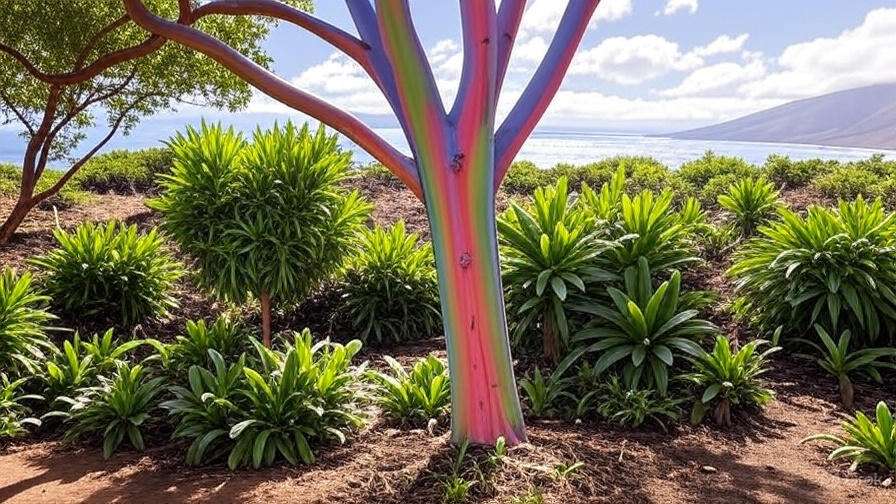
Climate Considerations 

Hawaii’s tropical climate offers an ideal environment for eucalyptus trees. However, these trees are more suited to the dryer, coastal areas of Hawaii. If you live in a more humid, rain-heavy part of the islands, it’s important to monitor the tree’s growth carefully, as excessive moisture can lead to fungal diseases.
Potential Challenges and How to Overcome Them 
While eucalyptus trees are generally hardy, they do face a few challenges in Hawaii:
- Pests: Look out for eucalyptus beetles and caterpillars that may harm the leaves. Regularly check your trees for signs of infestation and remove any pests manually or with natural remedies.
- Overwatering: Make sure not to overwater your eucalyptus tree, as this can lead to root rot. Ensure proper drainage in the soil and adjust watering based on the season.
By understanding these key factors and providing your eucalyptus trees with the right care, you can enjoy their vibrant growth and stunning presence in your Hawaiian garden!
How to Plant Hawaii Eucalyptus Trees 
Planting a Hawaii eucalyptus tree can be a rewarding experience, as these trees thrive in the state’s warm climate and provide beautiful, aromatic leaves and vibrant blooms. Here’s a step-by-step guide to help you plant and establish your own eucalyptus tree in Hawaii.
1. Choose the Right Eucalyptus Variety 
Hawaii is home to several eucalyptus species, but the Rainbow Eucalyptus (Eucalyptus deglupta) is the most popular for its striking, colorful bark. Other varieties, like Eucalyptus robusta or Eucalyptus citriodora, are also well-suited to Hawaii’s environment. Make sure to pick a species that matches your local climate and space.
2. Select an Ideal Planting Location 
Eucalyptus trees need plenty of sun to grow strong and healthy. Choose a location that receives full sun for at least 6 hours a day. 
If you’re planting near a building or structure, give the tree plenty of space to grow. Eucalyptus trees can become quite tall, so allow for ample room both above and around the tree.
3. Prepare the Soil for Planting 
Before planting, loosen the soil where the tree will be placed. This helps the roots establish themselves more easily. You can improve soil quality by adding compost or organic matter, which provides essential nutrients. Eucalyptus trees prefer slightly acidic to neutral soil, so ensure the pH level is between 6.0 and 7.0.
4. Plant the Tree 
When planting your eucalyptus tree, dig a hole that’s at least twice the size of the root ball. This ensures the roots can spread easily. Gently place the tree in the hole and fill it with soil, making sure the top of the root ball is level with the surrounding ground. 
If planting multiple trees, space them at least 10 to 15 feet apart. This allows the trees to grow without crowding each other out.
5. Watering and Mulching 
After planting, eucalyptus trees need regular watering to establish their roots, especially during the first few months. However, they don’t like sitting in water, so make sure the soil is well-draining.
A good trick is to mulch around the base of the tree with organic mulch like bark chips or straw. This helps retain moisture, keeps the soil temperature steady, and reduces the growth of weeds.
6.Fertilizing 
Eucalyptus trees benefit from a balanced fertilizer, especially during their growing season. Use a slow-release, nitrogen-rich fertilizer in the spring to promote strong growth. Be careful not to over-fertilize, as this can damage the tree and encourage excessive, weak growth.
7. Protecting Your Tree from Wind 
While eucalyptus trees are generally hardy, they can be vulnerable to strong winds, especially when they’re young. If you live in an area with frequent storms, consider providing some wind protection. You can stake the tree temporarily until it becomes more established.
8. Patience is Key 
Finally, be patient! Eucalyptus trees are fast growers, but it takes time for them to reach their full potential. With proper care and attention, your tree will thrive and provide beauty and shade for years to come.
By following these simple steps, you’ll be well on your way to planting a thriving eucalyptus tree in Hawaii. 

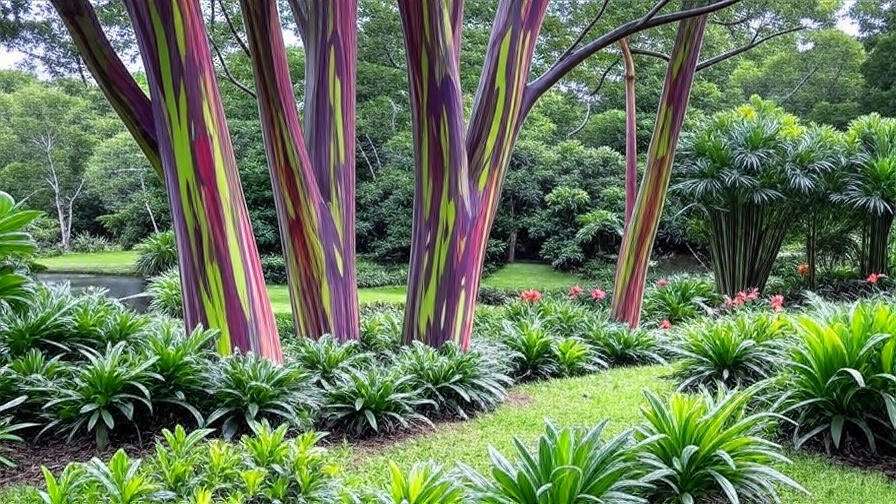
Caring for Your Hawaii Eucalyptus Trees 
Hawaii eucalyptus trees are beautiful and low-maintenance, but like all plants, they need a little care to thrive. Whether you’re a seasoned gardener or a beginner, taking care of your eucalyptus can be simple if you follow a few basic guidelines. Here’s how to keep your tree healthy and happy in Hawaii’s unique environment.
1. Watering 
Eucalyptus trees are drought-tolerant, but they still need regular watering, especially when young. During the first few months after planting, ensure the soil stays moist but not soggy. Water deeply to encourage strong root growth. Once established, they can survive on rainfall, but you may need to water during long dry spells.
Tip: Water early in the morning or late in the evening to reduce evaporation.
2. Soil and Drainage 
Hawaii’s volcanic soil is generally well-draining, which is great for eucalyptus trees. These trees prefer slightly acidic to neutral soil (pH 6-7). Make sure the planting area allows excess water to drain freely; waterlogged roots can lead to rot.
Tip: If your soil doesn’t drain well, consider adding sand or organic matter to improve it.
3. Sunlight 
Eucalyptus trees love full sun. Make sure to plant them in a location where they will get at least 6-8 hours of direct sunlight every day. This helps them grow strong and healthy, producing vibrant foliage and a beautiful canopy.
Tip: If planting near other trees or structures, ensure that your eucalyptus won’t be shaded out as it grows.
4. Fertilizing 
While eucalyptus trees aren’t heavy feeders, they will benefit from occasional feeding to promote healthy growth. Use a balanced, slow-release fertilizer once or twice a year, particularly in the spring, when the tree is actively growing.
Tip: Avoid over-fertilizing as this can lead to excessive, weak growth.
5. Pruning 
Pruning helps maintain the shape and health of your eucalyptus tree. Remove dead, damaged, or diseased branches to prevent problems from spreading. You can also trim any overly long or unruly branches to keep the tree neat and prevent it from becoming top-heavy.
Tip: Use clean, sharp pruning tools to avoid injuring the tree. Always cut at a slight angle to promote proper healing.
6. Pest and Disease Control 
While eucalyptus trees are relatively pest-resistant, they can sometimes attract insects like scale, aphids, or caterpillars. Keep an eye out for sticky residue (honeydew) or unusual leaf damage. Use organic insecticides or remove pests by hand when possible.
Tip: If you notice brown, discolored leaves or spots, it might be a fungal issue. Pruning and ensuring good air circulation can help prevent this.
7. Mulching 
Mulch helps retain moisture in the soil, keeps weeds at bay, and provides nutrients as it breaks down. Apply a layer of organic mulch, like wood chips or bark, around the base of your eucalyptus tree. Make sure to keep the mulch away from the trunk to prevent rot.
Tip: Replenish mulch annually to maintain its benefits.
8. Protecting from Wind 
Hawaii can have strong winds, and young eucalyptus trees may be vulnerable to wind damage. If planting in a windy area, consider using a stake or support to help the tree stay upright until it’s established. Windbreaks like fences or other trees can also protect your eucalyptus as it matures.
Tip: Watch out for signs of wind stress, such as leaning or broken branches, and adjust the tree’s support accordingly.
By following these simple yet essential steps, your Hawaii eucalyptus trees will grow strong, healthy, and beautiful for years to come. Happy gardening!
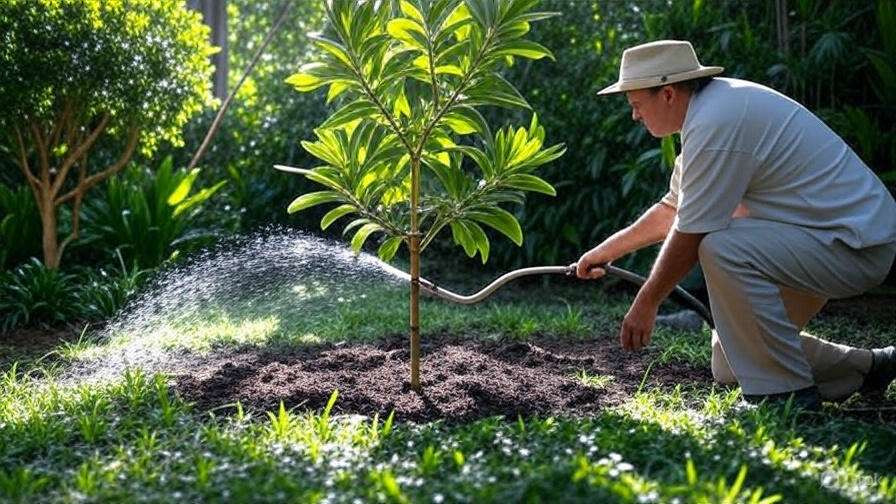
Common Problems with Hawaii Eucalyptus Trees and How to Solve Them
Hawaii’s warm climate makes it an ideal place for growing eucalyptus trees, but like any plant, they come with their own set of challenges. Here are some of the most common issues you might face when caring for your Hawaii eucalyptus tree—and, of course, how to fix them!
1. Yellowing Leaves (Chlorosis) 
Problem: Yellowing leaves are a common sign of nutrient deficiencies, particularly a lack of nitrogen or iron. Eucalyptus trees can also suffer from chlorosis due to poor soil drainage or overwatering.
Solution:
- Fertilize your tree with a balanced, slow-release fertilizer that includes nitrogen and iron. Look for one designed for trees or shrubs.
- Check the soil drainage: Make sure the soil is well-draining. If your eucalyptus is planted in an area that holds water, consider moving it to a more suitable location or amending the soil to improve drainage.
- Watering: Ensure you’re not overwatering. Eucalyptus trees like deep, infrequent watering but dislike constantly soggy roots.
2. Leaf Curling or Wilting 
Problem: Leaf curling or wilting can be a sign of environmental stress, pest infestation, or inadequate watering.
Solution:
- Check for pests: Aphids, mealybugs, or scale insects can attack eucalyptus trees, causing leaves to curl. Inspect the tree carefully and treat with insecticidal soap or neem oil if pests are present.
- Water properly: Make sure the tree is not too dry or too wet. The soil should remain consistently moist but not waterlogged.
- Ensure proper sunlight: Eucalyptus trees need plenty of sunlight to thrive. If your tree is not getting enough light, consider moving it to a sunnier spot.
3. Tree Bark Peeling 
Problem: While some eucalyptus species naturally shed their bark, excessive peeling can indicate stress, disease, or pest damage.
Solution:
- Monitor environmental stress: Extreme temperature changes or high humidity can cause bark shedding. Try to provide your eucalyptus with some shade during the hottest parts of the day if you’re experiencing extreme heat.
- Pests: Certain pests, like borers, can also damage the bark. Check the tree for any signs of infestation. If needed, treat with appropriate pest control methods.
4. Eucalyptus Trees Dropping Leaves 
Problem: It’s normal for eucalyptus trees to drop leaves during certain times of the year, but if they’re losing leaves more than usual, it could be a sign of stress.
Solution:
- Check for pests: A pest infestation, like scale insects, can cause the leaves to drop prematurely. Treat with organic pesticides or horticultural oils.
- Watering issues: Both overwatering and underwatering can cause leaf drop. Ensure your tree is getting the right amount of water—deep but infrequent watering works best.
5. Root Rot 
Problem: Root rot is caused by fungal infections, often due to overly wet or poorly draining soil. Eucalyptus trees with root rot may show signs like wilting, yellowing leaves, and a generally unhealthy appearance.
Solution:
- Improve drainage: Make sure the soil around your eucalyptus tree drains well. If you suspect poor drainage, amend the soil with organic matter to help water flow through.
- Water wisely: Avoid watering too frequently. Eucalyptus trees don’t like to sit in waterlogged soil. Water when the top few inches of soil are dry.
6. Leaf Spot or Fungal Diseases 
Problem: Fungal infections like leaf spot can cause brown or black spots on leaves, eventually leading to leaf drop.
Solution:
- Prune infected leaves: Remove and dispose of any infected leaves to stop the spread of the fungus.
- Use fungicides: A fungicide specifically for eucalyptus trees can help control the spread of fungal diseases. Always follow the instructions carefully.
- Improve air circulation: Fungal diseases thrive in humid, poorly ventilated areas. Ensure that your eucalyptus tree is not overcrowded and has plenty of airflow around it.
7. Eucalyptus Tree Not Growing Well 
Problem: If your eucalyptus tree isn’t growing as expected, it may not be receiving the right care or growing conditions.
Solution:
- Check the soil: Eucalyptus trees prefer well-draining, slightly acidic soil. Test the soil’s pH and adjust as needed.
- Ensure full sunlight: Eucalyptus trees need full sun to thrive. Ensure that your tree is planted in a location that receives at least 6 hours of direct sunlight each day.
- Fertilize: Lack of growth can often be remedied with a slow-release fertilizer, especially if the tree is in poor soil.
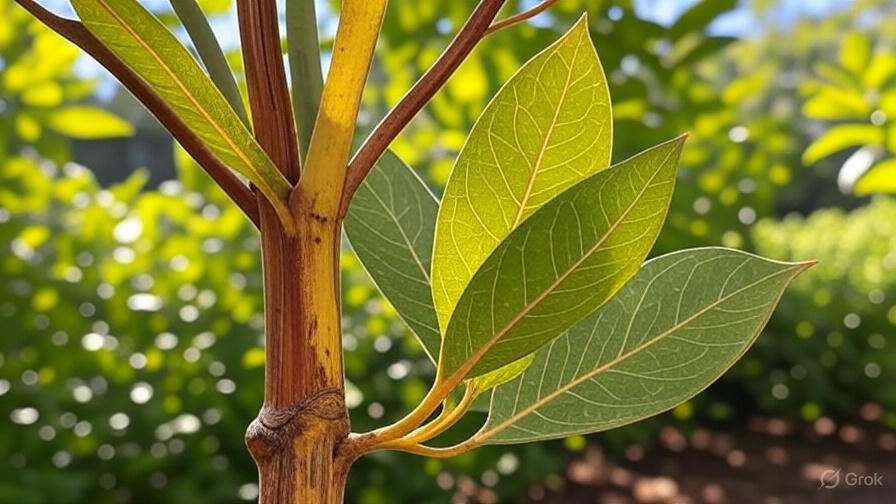
How to Harvest and Utilize Hawaii Eucalyptus Trees 
Harvesting and utilizing your Hawaii eucalyptus trees is an exciting step in the process of caring for them! Whether you’re looking to use the wood, leaves, or essential oils, eucalyptus offers a wide range of benefits. This section will guide you on how to harvest your trees safely and efficiently, along with creative ways to make the most out of this versatile tree.
1. When to Harvest Eucalyptus Trees 
Eucalyptus trees are fast growers, but they need a bit of time to reach maturity before you can harvest them for the best quality. Generally, it takes about 3 to 5 years for your eucalyptus tree to be ready for harvesting, but this can vary depending on the species. Look for these signs to know when it’s time:
- Tree Height and Diameter: Eucalyptus trees should be around 10-15 feet tall with a solid trunk. For larger projects, you can wait until they reach 30 feet or more.
- Healthy Growth: Make sure the tree is healthy with no signs of disease or pest damage. Healthy trees provide the best resources.
2. How to Harvest Eucalyptus Wood 
Harvesting eucalyptus wood is relatively simple, but care must be taken to preserve the tree’s health. Follow these steps:
- Select the Right Trees: Always choose mature trees or branches for harvesting. Avoid cutting down the main trunk of a young tree, as it may stunt its growth.
- Use the Right Tools: For small branches, a sharp pruning shear works well. For larger branches or the trunk, you’ll need a chainsaw. Always wear safety gear when cutting!
- Cut at the Right Angle: When cutting branches, make clean cuts at a slight angle to prevent disease and encourage proper healing.
- Avoid Over-Harvesting: Never cut more than 25% of the tree’s growth in one season. Over-harvesting can weaken the tree and reduce its overall health.
3. Utilizing Eucalyptus Wood 
Eucalyptus wood is incredibly versatile and can be used for a range of projects:
- Furniture and Décor: The wood has a beautiful grain and can be crafted into furniture, cutting boards, or decorative pieces. It’s durable and has a lovely natural scent.
- Firewood: Eucalyptus burns hot and creates long-lasting fires, making it an excellent choice for firewood.
- Woodworking Projects: Eucalyptus is perfect for making shelves, frames, or other small woodworking projects. Its density ensures longevity.
4. Using Eucalyptus Leaves 
If you don’t want to cut down your tree for wood, you can harvest the leaves, which have many uses!
- Essential Oils: Eucalyptus leaves are rich in oils. To extract them, steam distillation is typically used, which allows you to get the oil for personal or commercial use. Eucalyptus oil has many health benefits, including soothing respiratory issues and acting as a natural disinfectant.
- Herbal Remedies: The leaves can be used in teas or as an essential part of home remedies for colds or respiratory discomfort. Just make sure to follow proper guidelines for consumption.
- Aromatherapy: Use dried eucalyptus leaves to make natural air fresheners or potpourri. The fresh, invigorating scent is perfect for creating a calming atmosphere in your home.
5. Sustainable Harvesting Practices 
It’s important to harvest eucalyptus trees responsibly. Here’s how you can be sustainable:
- Regular Pruning: Prune your tree regularly to maintain its shape and encourage new growth. This way, you can harvest small branches without cutting down the entire tree.
- Plant New Trees: After harvesting, plant new eucalyptus trees to replace the ones you’ve taken. This ensures a continuous supply of eucalyptus without harming the environment.
- Use All Parts of the Tree: If you’re cutting branches for wood or leaves, try to use every part. Leftover twigs can be used for mulch, and bark can be used for crafting.
6. Safety Tips While Harvesting 
Safety should always be your top priority. Here are a few quick tips:
- Wear Protective Gear: Always wear gloves, goggles, and long sleeves when cutting or handling the tree to avoid injury from branches, thorns, or sharp tools.
- Be Mindful of Wildlife: Eucalyptus trees are home to various species of birds and insects. Check your tree before cutting to avoid disturbing wildlife.
By following these simple steps, you’ll be able to harvest and utilize your Hawaii eucalyptus trees in a sustainable, safe, and productive way. Whether you’re looking to use the wood for a home project, extract essential oils, or make your space smell amazing with eucalyptus leaves, the possibilities are endless!
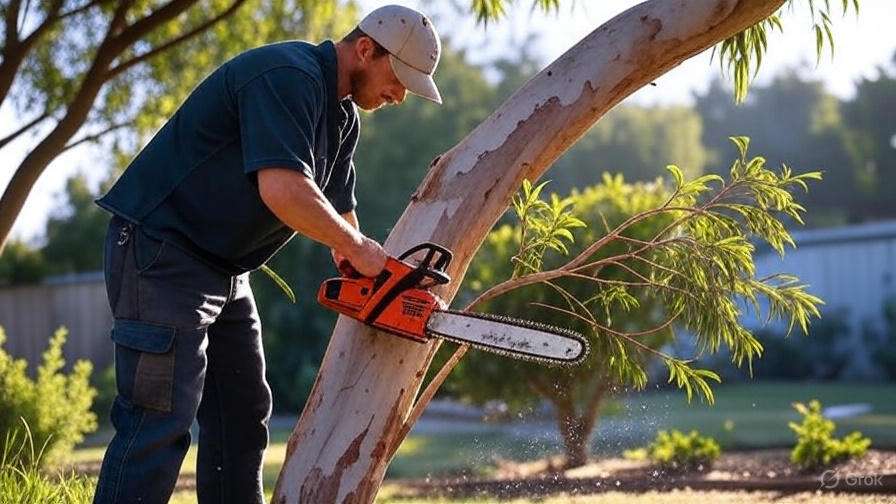
Troubleshooting: Quick Solutions for Common Issues
Growing and caring for Hawaii eucalyptus trees can be a rewarding experience, but even the best gardeners encounter challenges along the way. If you’re facing issues, don’t worry! Here are some quick and easy solutions to common problems that might arise.
1. Yellowing Leaves 
Possible Cause: Overwatering or poor drainage.
Solution: Eucalyptus trees are drought-tolerant but don’t like sitting in water. Ensure your tree is in well-draining soil and reduce watering. If the soil is too compact, consider repotting with a mix that promotes good drainage.
2. Leaves Curling or Wilting 
Possible Cause: Underwatering or heat stress.
Solution: Make sure your tree gets enough water, especially during hot periods. Eucalyptus trees need deep watering, but let the soil dry out between waterings. If you live in a very hot climate, consider some afternoon shade to prevent heat stress.
3. Brown Tips on Leaves 
Possible Cause: Low humidity or too much fertilizer.
Solution: Eucalyptus trees thrive in humid conditions. If you’re growing indoors or in a dry area, increase humidity by misting or placing a humidifier nearby. Also, reduce the amount of fertilizer, as too much can burn the roots and cause brown tips.
4. Pest Infestation 
Possible Cause: Aphids, mealybugs, or scale insects.
Solution: If you notice sticky residue or tiny insects, it’s time to act. Gently spray your eucalyptus tree with a mild soapy water solution to get rid of pests. For more severe infestations, consider using an insecticidal soap or neem oil.
5. Fungal Growth or Black Spots 
Possible Cause: Poor air circulation or too much moisture.
Solution: To prevent fungal issues, ensure your tree has enough space to allow airflow around it. Trim any dead or overcrowded branches. If black spots appear, remove affected leaves and avoid overhead watering to reduce moisture on the leaves.
6. Tree Not Growing or Stagnant Growth 
Possible Cause: Soil issues, lack of nutrients, or wrong planting location.
Solution: If your tree seems stuck, check the soil’s pH. Eucalyptus prefers slightly acidic to neutral soil. Adding compost can improve soil quality and provide nutrients. Also, make sure your tree gets at least 6 hours of sunlight daily.
By following these easy troubleshooting tips, you’ll keep your Hawaii eucalyptus tree healthy and thriving!
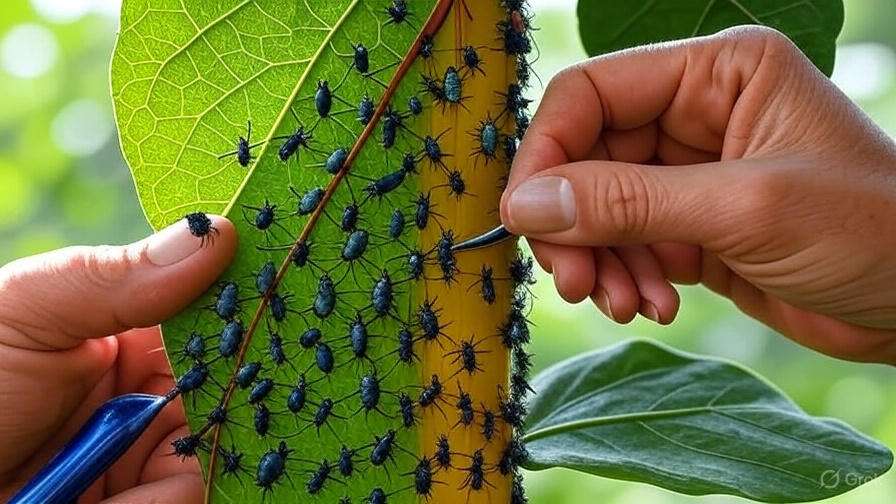
Conclusion
Growing and caring for Hawaii eucalyptus trees can be an incredibly rewarding experience, whether you’re looking to enhance your garden with stunning foliage or enjoy the benefits of their aromatic oils. By following the steps outlined in this guide, you can ensure your trees thrive and add beauty to your outdoor space for years to come.
Remember, success with eucalyptus starts with understanding their needs—choosing the right location, providing the right care, and staying alert for any potential issues. Whether you’re a first-time gardener or just new to eucalyptus trees, with patience and a little effort, you’ll soon be able to enjoy the vibrant growth and unique characteristics of these beautiful trees.
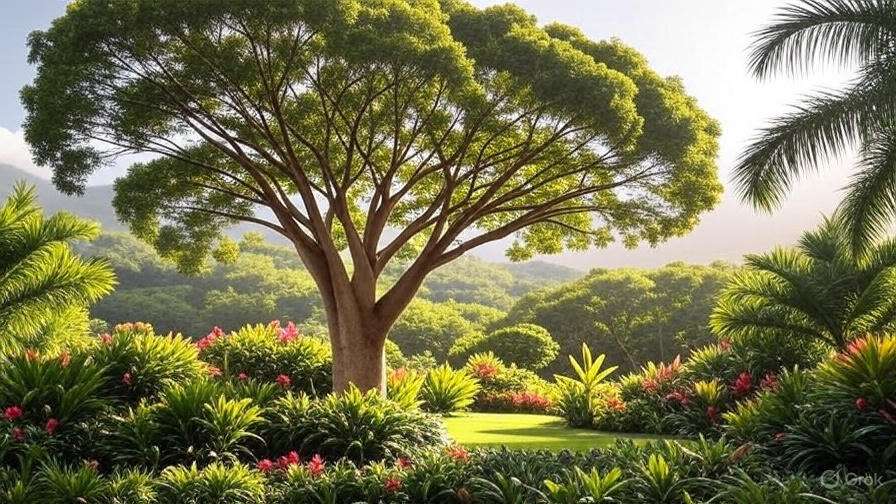
Now that you’re armed with the knowledge to grow healthy, thriving Hawaii eucalyptus trees, why not take the next step and start planting? 
Frequently Asked Questions (FAQs)
How fast do Hawaii eucalyptus trees grow?
Hawaii eucalyptus trees are fast-growing and can reach heights of 30-50 feet in just a few years under optimal conditions. They grow quickly, especially in tropical climates with plenty of sunlight and well-draining soil.
What’s the best time to plant a Hawaii eucalyptus tree?
The best time to plant a Hawaii eucalyptus tree is during early spring or fall when temperatures are moderate. This gives the tree a chance to establish strong roots before facing extreme weather conditions.
Can Hawaii eucalyptus trees be grown in pots?
Yes, you can grow Hawaii eucalyptus trees in large pots, but they need plenty of space for their roots to grow. Keep in mind that potted trees may require more frequent watering and maintenance compared to those planted directly in the ground.
Why are the leaves on my eucalyptus tree turning yellow?
Yellowing leaves on a eucalyptus tree can be caused by several factors, including overwatering, poor drainage, or nutrient deficiencies. Check the soil to ensure it’s not too wet, and consider fertilizing the tree with a balanced fertilizer.
How do I prune my Hawaii eucalyptus tree?
Pruning should be done in early spring before the tree starts its active growing season. Trim dead or damaged branches and shape the tree as needed, making clean cuts to prevent disease. Always use sharp, clean pruning tools.
Do eucalyptus trees need a lot of water?
While eucalyptus trees require regular watering when young, once established, they are fairly drought-tolerant. Be sure to water deeply but infrequently, allowing the soil to dry out between waterings to prevent root rot.
Are eucalyptus trees toxic to pets?
Yes, eucalyptus trees can be toxic to pets if they ingest the leaves. Keep pets away from the tree, and if you notice any signs of poisoning, such as drooling or vomiting, contact a veterinarian immediately.
How can I prevent pests from damaging my eucalyptus tree?
Regularly inspect your eucalyptus tree for pests like aphids, eucalyptus weevils, or scale insects. You can use organic pest control methods, such as neem oil, or consider introducing natural predators like ladybugs to help control the pest population.


